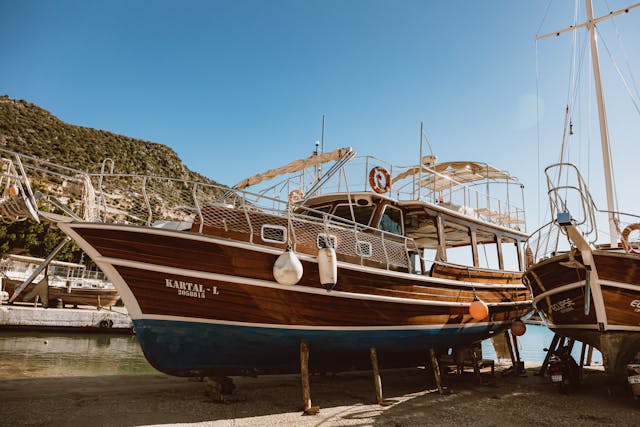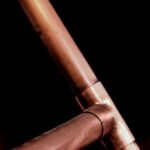Getting Started with Boat Engine Controls
You’re about to start an exciting adventure as soon as you step on your boat. But before you can glide over the sparkling water, you need to get good at one very important thing: controlling the engine. You need these tools to be able to navigate with ease and have a smooth time out on the open water.
No matter how much you know about sailing or how new you are to boats, it’s important to know how these methods work. Not only does knowing the right things help you do better, but they also make you safer as you discover secret coves and colourful beaches. Take off your hat and let’s learn everything you need to know about how to control a boat’s engine!
A number of different types of boat engine controls
There are different kinds of settings for boat engine controls, and each one is meant to make the operator’s experience better. Mechanical buttons are the most popular type. These use wires and switches to give direct input, which many boats like.
The next type is an automatic speed and shift device. These are accurate, and the user doesn’t have to work as hard to use them. Most of the time, they have keys or joysticks that make controlling speed and direction easy.
After that there’s fly-by-wire tech. These days, messages are sent wirelessly instead of through mechanical links. This makes the changes between speeds easier.
Some boats have systems that are combined, which means that they do more than one thing at once. Adjustments for navigation can be made along with engine controls, which is very helpful for people who need to do more than one thing at sea.
Which type to get will rely on how you like to boat and how tech-savvy you are. Each choice has its own benefits that you should learn more about as you improve your sailing skills.

How to Use the Throttle and Shift Controls
The throttle and shift buttons are very important for getting around on your boat quickly. Because they work together to control speed and direction, driving is smooth.
The throttle controls how much power the engine puts out. By changing it, you can make the speed faster or slower as needed. To keep control while speeding up or slowing down easily, a light touch is often best.
On the other hand, shift buttons let you change gears. This is very important when going from moving forward to moving backwards or staying in neutral. Knowing how each position feels will help keep travellers from being startled by quick shocks.
It takes time to get good at these settings. Each boat’s speed and shift systems may be a little different in how sensitive they are. Making sure you know how to use your setup will make all the difference on your boat trips.
Controls for the steering
When it comes to steering your boat, you have a few choices, and each has its own benefits. Cables and links are used in traditional mechanical systems to make handling easy. The head and the rudder are directly linked with this tried-and-true way.
On the other hand, hydraulic steering systems are more popular because they are quick and easy to use. They make moving around easy and provide little feedback resistance. Many boats like how quick these systems can be when they need to get through small areas or rough water.
Electric turning is another new idea that is making news in the world of boats. With exact digital settings, it’s easy to make changes at high speeds and doesn’t require as much physical work on long trips.
The type of boat you have and how you plan to use it will often help you choose the right method. Before choosing a steering system that works best for your marine lifestyle, you should always think about things like comfort, response, and upkeep needs.

Electronic Controls vs. Manual Controls
A lot of people have strong opinions about whether boat engine settings should be electronic or manual. Each choice comes with its own pros and cons.
Electronic settings are very accurate. Better gear changes are possible, and they can work with more modern guidance systems. This technology often improves control, which makes it easier for new leaders to run their boats.
Manual controls, on the other hand, let you feel the boat, which many experienced boaters like. Some people find it pleasant to physically change gears or speed settings. This direct link to the boat can help the captain feel more in charge.
Maintenance is also very different. Some changes on electronic systems need specialised knowledge, but most problems with manual sets are easier to fix on your own. Given how tech-savvy you are, one might be better for you than the other in this age of growing marine knowledge.
Tips on How to Fix Problems and Do Regular Maintenance
For a smooth boating experience, it’s important to keep the keys for your engine in good shape. Regular checks can keep things running smoothly and stop problems before they happen.
Start by doing regular checks. Check the shift and speed wires for signs of damage or wear. A simple look-over can keep you from having bigger problems in the future.
Also, lubrication is very important. Keep the moving parts well oiled so that they don’t get stiff while they’re working. This will make the car more quick, which will make it easier to turn and shift.
Please remember to clean! Over time, saltwater residue can build up and make the boat less effective. Always rinse off parts with fresh water after each trip, especially if you were in ocean.
When trying to figure out what’s wrong, pay attention to any strange sounds or resistance you feel when you press on the throttle or shifts. These could be signs of deeper problems that need to be fixed right away.
If the problems keep happening, it’s a good idea to talk to a skilled repair. They know how to figure out complicated problems that might not show up on normal checks.
With these tips, you can stay responsible and enjoy your fishing trips without having to worry about technical problems getting in the way.
















